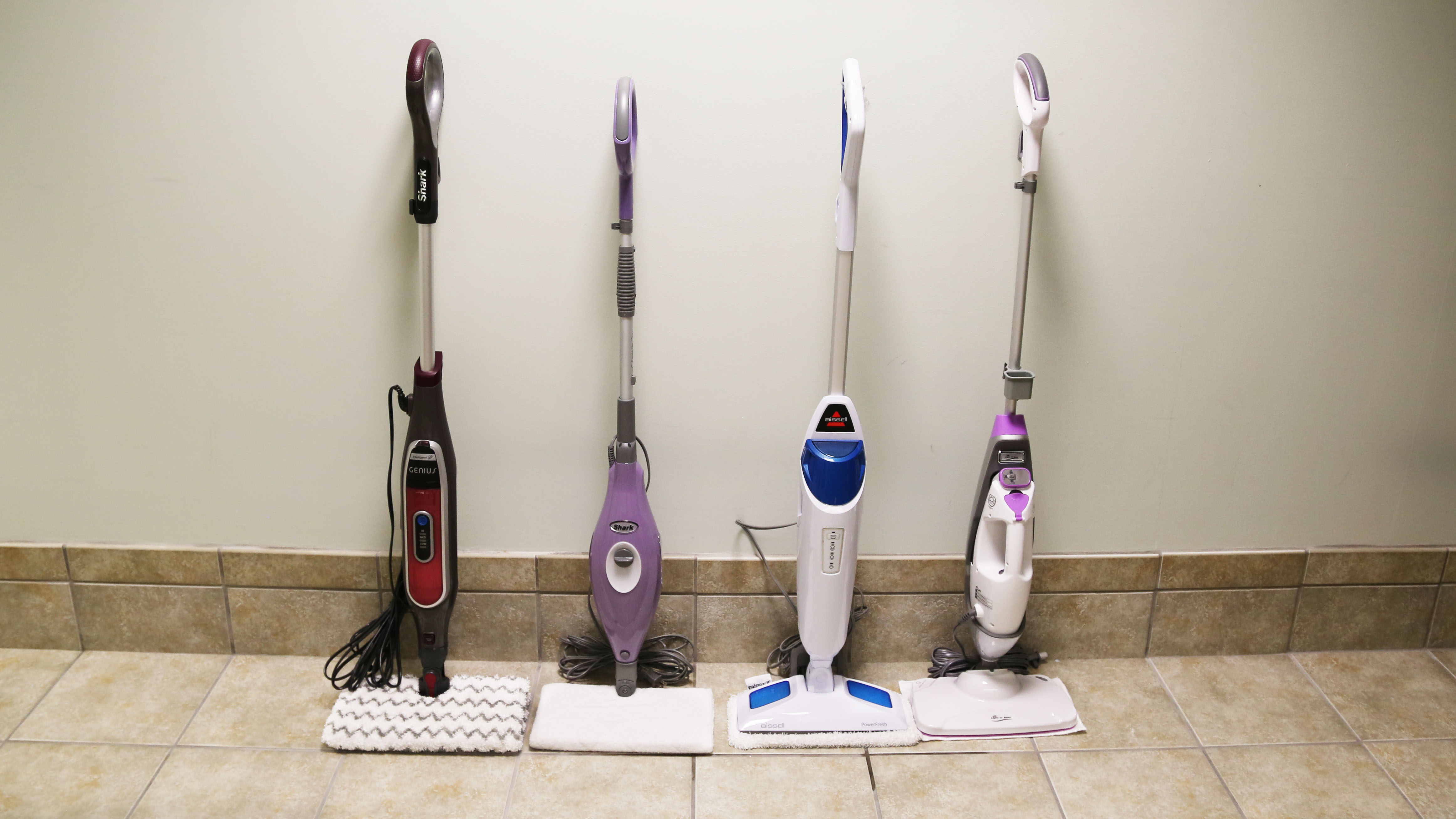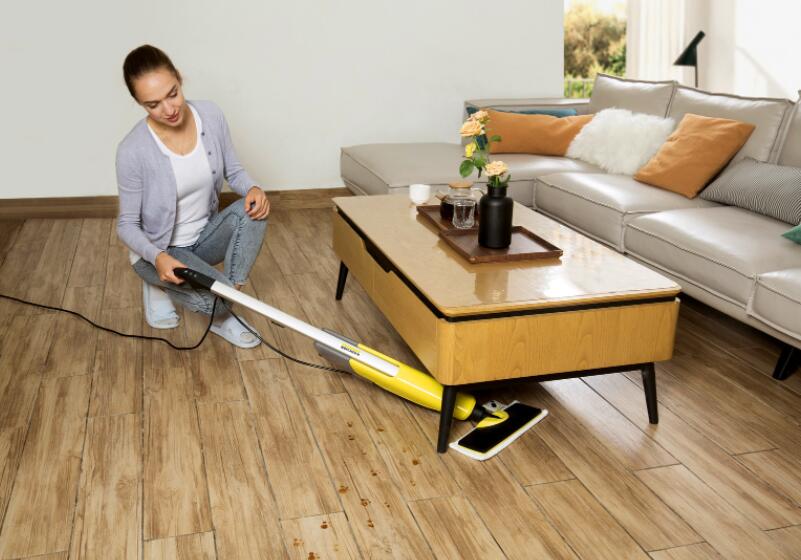Picture this: you’re staring down at your grimy kitchen floor, a battlefield of crumbs, sticky spills, and mysterious stains. The thought of lugging out the bucket, mop, and cleaning solution fills you with dread. But what if there was a simpler, faster, and more effective way to tackle the mess? That’s where the steam mop comes in—a superhero for your floors!

Image: www.dontwasteyourmoney.com
Steam mops are a cleaning marvel, offering a powerful yet gentle way to sanitize and disinfect your floors without harsh chemicals. But before you rush out to buy one, a crucial question arises: what types of floors can you safely steam clean? This guide will delve into the diverse world of steam mopping, outlining which floors are suitable, which are best avoided, and how to make the most of this cleaning tool.
Understanding Steam Mops and Their Power
Steam mops work by heating water to create steam, which is then released onto the floor surface. This steam acts as a natural disinfectant, lifting dirt, grime, and even bacteria with its intense heat. But it’s not just about cleaning; steam mops offer numerous benefits:
- Eco-friendly cleaning: Less reliance on harsh chemicals, contributing to a healthier home environment.
- Deep cleaning: Steam penetrates deeper than traditional mopping, removing embedded dirt and grime.
- Sanitization: The high heat of the steam kills bacteria, viruses, and other pathogens.
- Improved floor appearance: Steam can often revive dull floors, making them shine brighter.
However, like any cleaning tool, steam mops are not a one-size-fits-all solution. Certain floor types thrive under steam, while others could be damaged. It’s essential to know the specifics of your floor material to ensure a safe and successful clean.
Flooring Types that Embrace Steam Mops
Let’s now take a closer look at the floor types that happily welcome the power of steam:
-
Hardwood floors: Yes, you read that right! With proper precautions, steam mopping can be a great option for hardwood floors. However, there are a few key points to remember:
- Moisture Level: The key is to use the steam mop on low heat setting and avoid excessive contact time. Exposing hardwood to excessive moisture can lead to warping or damage.
- Sealing Matters: Ensure your hardwood floors are properly sealed. The sealant acts as a protective barrier against moisture penetration.
- Test in an Inconspicuous Area: Always do a test run in a small, inconspicuous area of your floor before tackling a larger section. This allows you to check for any potential unwanted reactions.
-
Ceramic tiles: Ceramic tiles are among the most robust floor types and respond well to the steam mopping treatment. They remain unaffected by moisture, making them a perfect candidate for steam cleaning.
-
Porcelain tiles: Porcelain, with its dense structure and water-resistant properties, can also be confidently steam mopped.
-
Laminate floors: Though not strictly a natural material, laminate flooring can, in most cases, withstand steam cleaning without damage. However, it’s essential to consult the manufacturer’s recommendations before attempting to steam mop.
-
Stone tiles: Limestone, marble, and slate are all natural stone types that may benefit from steam mopping. However, they are quite porous, so you’ll want to test a small area first.
-
Vinyl and vinyl plank flooring: These versatile options are typically resistant to moisture and safe for steam cleaning. However, always check the manufacturer’s instructions, as some vinyl types may have limitations.
Floor Types to Avoid Steam Cleaning
While many floors are happy to be steam mopped, some types are better off left alone. Let’s look at those flooring types that could be harmed by the steam:
-
Unsealed hardwood flooring: If your hardwood floors lack a proper sealant, steam mopping can cause damage by penetrating the wood and potentially leading to warping or discoloration.
-
Engineered hardwood floor: Engineered hardwood, despite its name, is constructed with multiple layers. While the top layer may be a real wood veneer, the underlying layers often contain materials that don’t react well to steam. Consult the manufacturer’s recommendations before attempting steam cleaning.
-
Softwood floors: Softwood floors, like pine or cedar, tend to be more susceptible to moisture damage than hardwood. Steam mopping could lead to warping, discoloration, or even mold growth.
-
Cork flooring: Cork flooring is known for its warmth, softness, and sound-absorbing qualities. However, its natural porous nature makes it sensitive to water damage. Steam cleaning can negatively impact cork’s integrity, potentially leading to warping or discoloration.
-
Bamboo flooring: Bamboo, a natural and sustainable flooring option, can react negatively to steam cleaning. While some bamboo floors are treated for water resistance, it’s always best to check with the manufacturer before using a steam mop.
-
Carpet and rugs: Steam mopping is not recommended for carpet or rugs. The intense heat and moisture can damage the fibers, leading to shrinkage, warping, or even mold growth. Dedicated carpet cleaners are the optimal cleaning method for these types of flooring.

Image: mopreviewer.com
Expert Tips and Tricks for Successful Steam Mopping
Now you’ve got a solid understanding of which floors to steam mop and which ones to avoid. Let’s explore some expert tips for maximizing your steam mopping experience:
-
Use the Right Cleaning Solution: While steam itself is a potent cleaning agent, you can enhance its effectiveness with specialized cleaning solutions designed for steam mopping. Look for eco-friendly options that are safe for your specific floor type.
-
Follow the Manufacturer’s Instructions: Always refer to the user manual that came with your steam mop. This will provide guidance on specific settings, cleaning solutions, and any precautions for your particular model.
-
Adjust the Steam Setting: For delicate floors, use the steam mop on a low setting or with a shorter contact time. For heavier dirt and grime, you can increase the steam output.
-
Work in Sections: Instead of trying to clean your entire floor at once, break the task into smaller sections. This allows you to focus on each area thoroughly and ensure adequate drying time.
-
Dry the Floors Thoroughly: After steam mopping, wipe up any excess moisture as soon as possible. You can use a dry cloth or a clean mop to ensure that the floor dries completely.
What Floors Can You Use A Steam Mop On
Conclusion: Unleash the Power of Steam for a Sparkling Clean Home
Steam mopping provides a powerful and efficient cleaning solution for various floor types, offering a combination of sanitation, deep cleaning, and eco-friendliness. By understanding the specific requirements of your floor, following expert tips, and taking the necessary precautions, you can unlock the full potential of steam mopping, transforming your home into a sparkling, healthy, and refreshing space. So, say goodbye to endless scrubbing and welcome the power of steam, making cleaning a breeze! Remember to consult with the manufacturer’s instructions, and you’ll be amazed by the transformative results. Happy steam cleaning!






